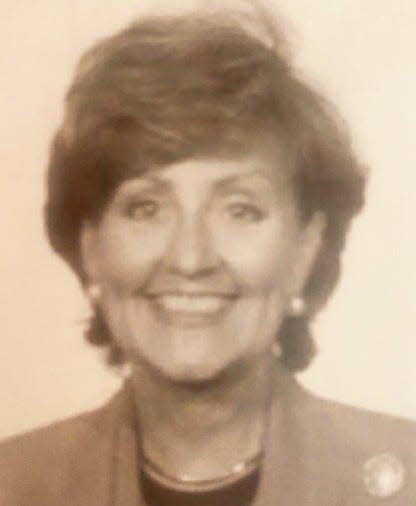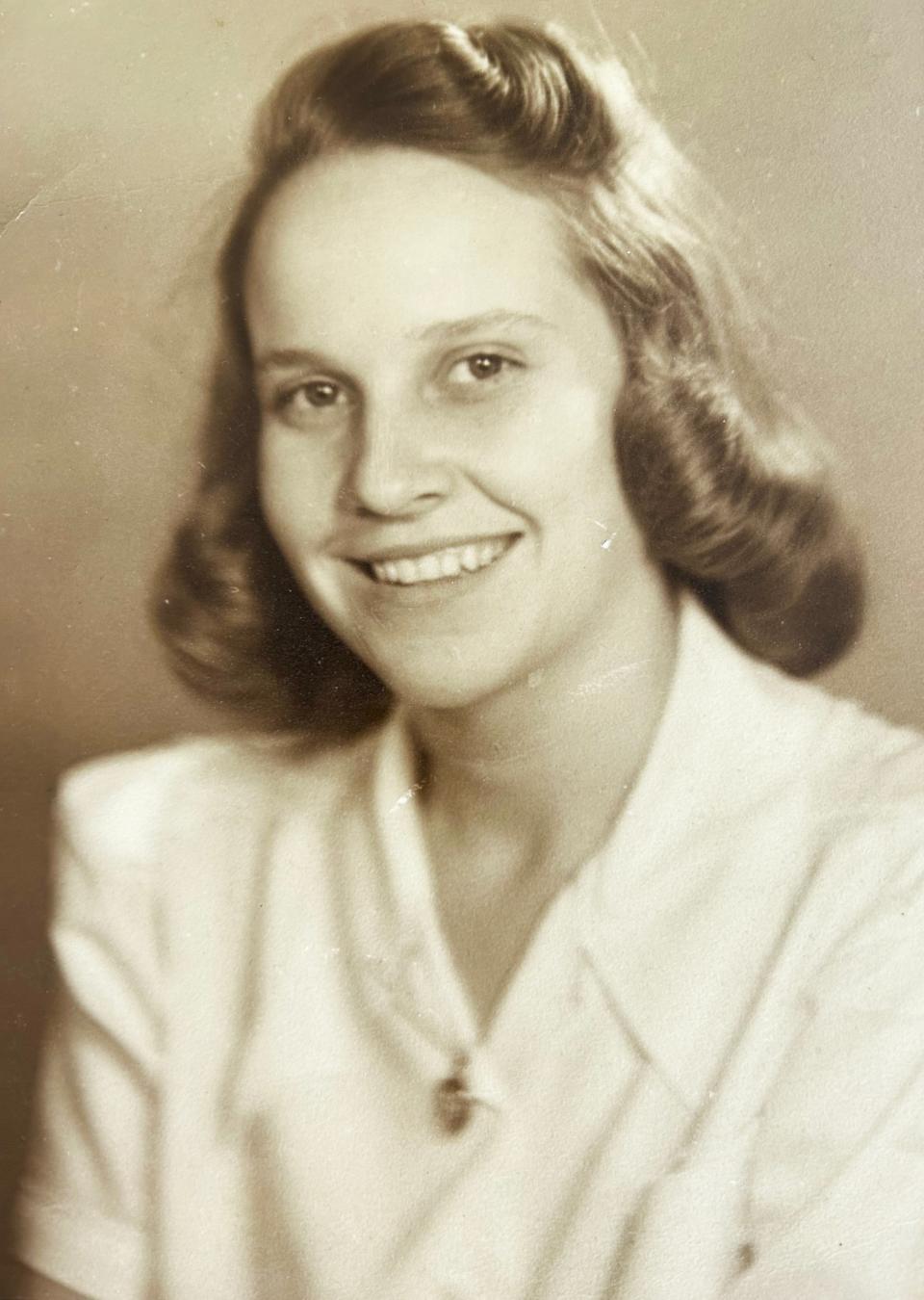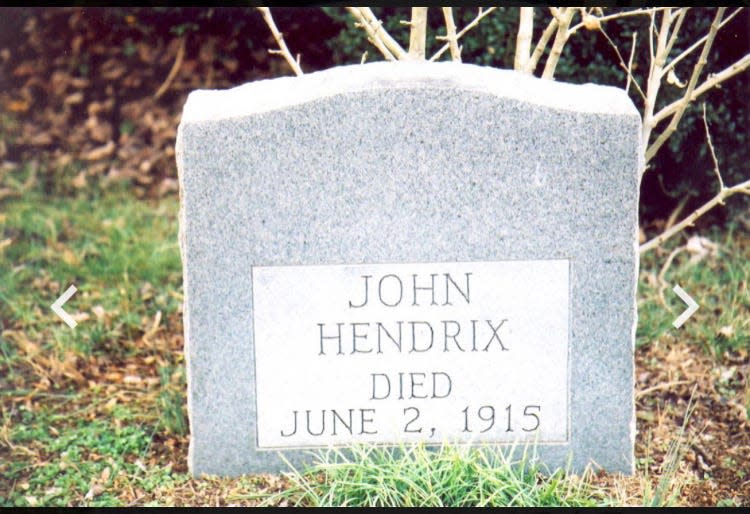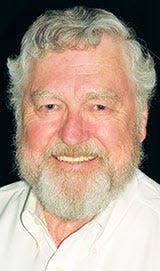Read this woman's story of her mother's work in the "Secret City"
Written by Anna Caryl Guffey and presented to the Shakespeare Club of Hopkinsville, Kentucky. It was provided to me by Stephen Ray who contacted me for a tour of Oak Ridge and reciprocated with a tour of the Clarksville Base at Fort Campbell.
When I spoke to Anna Caryl, she said she had drawn from Denise Kiernan’s book, "The Girls of Atomic City," and other online resources. I believe you will agree with me that she has done well in her research and the experiences of her mother who worked in Oak Ridge.

The three-part series is one I think you will really enjoy. Anna’s approach to a story about Oak Ridge is done in a well-balanced way of details and observations pulled from many online sources.
***
May 1945, in the chemistry lab of Murray State College, an attractive brunette coed, Miss Brown, was dressed in a white lab coat and focused intently on the pipette, beaker and Bunsen burner before her. The semester was coming to an end, and the experiment was important to her grade, but her primary concern that day was the fact that she still did not yet have a job for the summer, a job that would enable her to return to Murray State next fall.

As the bell rang, she shed her lab coat and hurried to the bulletin board at the end of the hall to see if there were any new job notices. There she saw it, a new announcement: "Come Help Us Win the War!," in bold letters, followed by a room number in the student union building where a recruiter would be answering questions.
Could this be it? A chance to earn the money needed for school next year and at the same time, a chance to do something to help bring her brother, who had been fighting in Europe for three years, home at last.
The young coed rushed across campus, up the steps to the student union building and into the designated room. There, sitting behind a desk, was a serious looking man in his 40s, dressed in a dark suit and dark tie. As the coed approached the recruiter, she was full of questions and enthusiasm.
At the same time, in May of 1945, halfway around the world in the Philippines, a young sergeant from Kentucky, tanned and hardened by three and a half years of fighting the Japanese from island to island across the South Pacific, was training for what was to be the largest and most complex military operations in human history, Operation Downfall, the invasion of Japan.
Operation Downfall was scheduled for Nov. 1, 1945, and was to involve 25 divisions of Allied troops, as compared to the 10 divisions involved in Operation Overlord, the invasion of Normandy.
The sergeant from Kentucky and his fellow American soldiers had been told that there would be millions of casualties in the invasion, as they would have to fight, not only the Japanese military, but every man, woman, and child in Japan. The hostile Japanese population had been organized into the Patriotic Citizens Fighting Corps and had been ordered to be "100 million shields for the emperor," who were to die, either by fighting or by suicide.
The Japanese had designated 10,000 kamikaze pilots and planes and hundreds of small suicide boats to be used on the invasion fleets. One staff study estimated that the kamikazes alone could destroy one third to a half of the invasion force before it ever landed.
And so it was that the young sergeant from Kentucky and his fellow American soldiers with whom he trained, had little hope of ever returning home.
Back at Murray State College, the recruiter’s somber demeanor had softened somewhat when he learned that Miss Brown was a science major.
However, he had few answers to her questions. All he said was: "We cannot tell you what you are going to do, but we can tell you how to do it and we can only tell you that if our enemies achieve what we are attempting before we do, God help us!"
Miss Brown spent the next hour filling out a long application form, which asked not only about her education and job experience, but also for the names of her former teachers, employers, friends, and neighbors, and whether or not she had ever been arrested for any reason.
The application complete, the recruiter told Miss Brown that she would hear from them in a week or so.
At last, only days before the end of the school year, the telegram with a job offer from Clinton Engineer Works arrived. The instructions in the telegram told her exactly what she needed to know and nothing more.
Miss Brown was to arrive at the bus station in a town over 300 miles away on a certain day. At the station, a second bus, with the name Clinton Engineer Works on the side, would be waiting for her.
Very early in the morning, on the given day, the 19-year-old Miss Brown, dressed in a new navy blue suit that her mother had sent her, and carrying a small suitcase containing all of her belongings, boarded the bus in Murray, Kentucky. Alone.
Miss Brown was headed for an unknown designation, to do an unknown job for an unknown company and traveling farther from home than she had ever been in her life. But there was a war going on and she was excited to do her part to help end it!
Eight long, hot hours later, Miss Brown arrived at the large, bustling designated bus station and boarded a small yellow school bus with a sign on the side, "Clinton Engineer Works."
Miss Brown showed the driver her identification and her letter from CEW and went to find a seat and wait for the other passengers. But, as she took her seat the driver started the bus and drove out of the station. She was the only passenger. She watched as they drove out of the large city into the rural countryside.
After a few miles, the bus turned onto a narrow, red clay dirt road. For 20 miles they drove farther and farther from civilization. The red clay dust rolled in through the open windows and covered her new navy blue suit.
Miss Brown sat appalled, wondering, "Where in the world are we, and what have I done?"
After an hour the bus started over a bridge, and Miss Brown saw a sign, the Clinch River. Ahead was a large guard gate with armed guards and barbed wire fences stretching on either side for as far as she could see.
One of the guards entered the bus and asked to see her papers. He checked them against a list that he carried and then told the driver to proceed.
As the bus drove through the armed gate, Miss Brown saw a large billboard. “What you see here, what you do here, what you hear here, when you leave here, let it stay here.” What was this place? It looked more like a camp than a town. All the buildings were white, the sidewalks were boards, and everywhere she looked instead of red clay dust was red clay mud.
Miss Brown checked in at the administration building where she was given a badge with her name on it. She was told that she was to always wear the badge while at CEW.
She then spent the next hour filling out more papers. Again, and again she signed her name, swearing that she would not, "at any time disclose either orally or in writing, or otherwise, to any person ... any knowledge or information, which I may have acquired while in the employ of Clinton Engineer Works."
After two weeks of training in a chemistry lab to operate a Beam-a-lite Balance and to analyze an element they called Tuballoy, Miss Brown was given a second badge that she was to wear to gain access to the building where she would work and to the bus that would take her there.
On the second badge was written Miss Brown's name and the letters, Building 9733-1, Y-12, Oak Ridge, Tennessee.
What was this place and how and why had it come into existence here in the foothills of Tennessee?
It was known as Clinton Engineer Works or CEW and the city was known as Oak Ridge, but often referred to as a secret city. Later the city would be called the "City Behind the Fence," "Atomic City," and the "Secret City." It was the biggest secret the nation had ever kept.
Inhabited by the "Secret Sharers" who had uprooted themselves from all over America to live, sealed in privacy, under military dictatorship, driven by wartime urgency - for a project only a fraction of its citizens understood.
In the beginning, this place was called Site X, the mystery city of the 1940s, a unique melting pot of a frontier town with one of the greatest collections of brain power in the history of the world. It was Oak Ridge, Tennessee, and it was so secret that it did not appear on any map until 1949, when the public was first allowed to enter the city.
Almost nobody outside the immediate area even knew where it was or why it was there.
Vice President Harry Truman didn't know. Tennessee's governor, Prentiss Cooper, didn't know he had a new town in his state until it was already sealed off and under construction. And even then, he didn't know why.
It was a city that had been foreseen by a local mystic, John Hendrix, in 1900. As the legend goes, Hendrix was told by a voice to sleep on the ground for 40 nights and he would learn about the future. He did as he was told and on the 41st day he emerged from the woods and beginning at the local crossroads general store he told everyone who would listen about the amazing things he had seen in his visions while sleeping on the ground.
"Bear Creek Valley someday will be filled with great buildings and factories and they will help toward winning the greatest war that will ever be. There will be a city on Black Oak Ridge. A railroad spur will branch off the main L&N line. Big engines will dig big ditches and thousands of people will be running to and fro. They will be building things and there will be great noise and confusion and the earth will shake. I've seen it. It's coming."

True to John Hendrix vision, Oak Ridge, Tennessee, would be built some 42 years later and would be built for one reason and one reason only, the production of Oralloy, which stands for Oak Ridge Alloy and is a code name for Uranium-235, enriched weapons grade uranium and fuel for "Little Boy," the first atomic bomb ever used in warfare.
Oak Ridge was built as a direct result of a letter written by Leo Szilard and signed by Albert Einstein to President Roosevelt in 1939 citing the urgent need to develop the capability to sustain a chain reaction of uranium for a very powerful bomb. From this letter came the plan for our nation to create an atomic weapon that would be more powerful than any weapon in the history of the world.
***
Next Anna Caryl will give some background information leading up to the Manhattan Project.
D. Ray Smith is the city of Oak Ridge historian. His "Historically Speaking" column is published each week in The Oak Ridger.

This article originally appeared on Oakridger: Miss Brown and the Secret City, part 1

